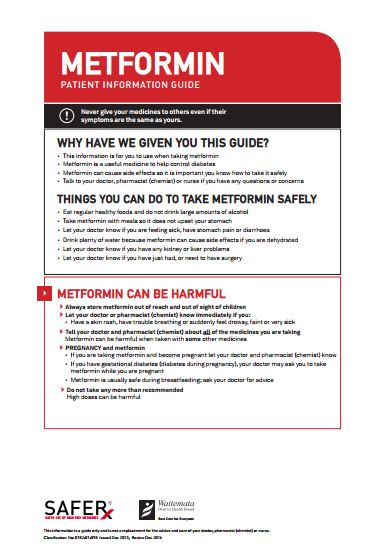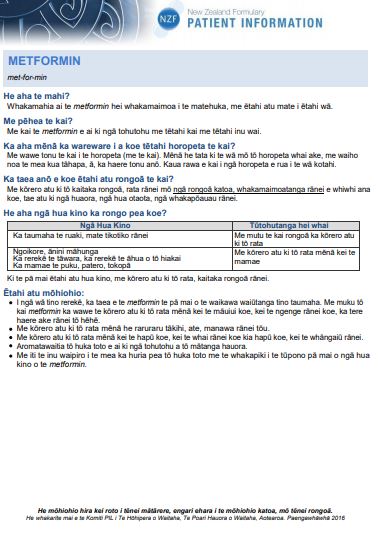Metformin is a tablet used to treat or prevent type 2 diabetes. It is usually the medicine of first choice for this condition. Metformin lowers your blood glucose levels and your chance of having a heart attack or stroke. It has other benefits such as mild weight loss. Read more about type 2 diabetes and pre-diabetes.
Metformin may be used to treat gestational diabetes (diabetes that develops during pregnancy). Read more about gestational diabetes and taking metformin for gestational diabetes(external link) (Māori(external link) and Samoan(external link)).
Metformin is also used to treat polycystic ovarian syndrome.
Metformin can be used alone or in combination with other medicines such as insulin. It is available with vildagliptin, called Galvumet or empagliflozin, called Jardiamet.









